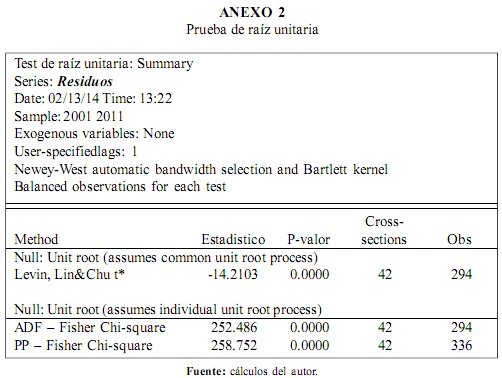- Akerlof, G. A.; Yellen, J. L. “A Near Rational Model of Business Cycle With Wages and Price Intertia,”Quarterly Journal of Economics, 100, 5, Supp. 1985, pp. 823–38.Google Scholar
- Akerlof, G. A.; Yellen, J. L.Efficiency Wage Models of the Labor Market, Cambridge, New York and Melbourne: Cambridge University Press, 1986.Google Scholar
- Albrecht, J. W.; Vroman, S. B. “A Note on the Long Run Properties of the Shirking Model,”Labour Economics, 3, 2, September, 1996, pp. 189–95.CrossRefGoogle Scholar
- Altenburg, L.; Straub, M. “Efficiency Wages, Trade Unions, and Employment,”Oxford Economic Papers, 50, 4, October, 1998, pp. 726–46.CrossRefGoogle Scholar
- Bowles, S. “The Production Process in a Competitive Economy: Walrasian, Neo-Hobbesian, and Marxian Models,”American Economic Review, 75, 1, March, 1985, pp. 16–36.Google Scholar
- Bulkley, G.; Myles, G. D. “Trade Unions, Efficiency Wages, and Shirking,”Oxford Economic Papers, 48, 1, January, 1996, pp. 75–88.Google Scholar
- Calvo, G. “Quasi-Walrasian Theories of Unemployment,”American Economic Review, 69, 2, May, 1979, pp. 102–7.Google Scholar
- Calvo, G.; Wellisz, S. “Hierarchy, Ability and Income Distribution,”Journal of Political Economy, Part I, 87, 5, October, 1979, pp. 991–1010.Google Scholar
- D'Orlando, F. “Disoccupazione Involontaria e Stabilità dell'Equilibrio nei Modelli di Salario-Efficienza con ‘Shirking’,”Rivista di Politica Economica, 88, 6, June, 1998, pp. 71–98.Google Scholar
- Katz, L. F. “Efficiency Wage Theories: A Partial Evaluation,” in Stanley Fischer, ed.,NBER Macroeconomics Annual 1986, Cambridge, MA, and London, U.K.: MIT Press, 1986, pp. 235–76.Google Scholar
- Laszlo, G. “Bismarckversus Beveridge. Flat-Rate and Earnings-Related Unemployment Insurance in a General Efficiency Wage Framework,”FinanzArchiv, 57, 3, 2000, pp. 243–60.Google Scholar
- Marti, C. “Efficiency Wages: Combining the Shirking and Turnover Cost Models,”Economic Letters, 57, 3, December, 1997, pp. 327–30.CrossRefGoogle Scholar
- Nisticò, S.; D'Orlando, F. “Some Questions for New Keynesians,” in Roy Rotheim, ed.,New Keynesian Economics/Post Keynesian Alternatives, London, U.K., and New York, U.S.A.: Routledge, 1998, pp. 134–52.Google Scholar
- Phelps, E. S.Structural Slumps, Cambridge, MA, and London, U.K.: Harvard University Press, 1994.Google Scholar
- Pisauro, G. “The Effect of Taxes on Labour in Efficiency Wages Models,”Journal of Public Economy, 46, 3, December, 1991, pp. 329–45.Google Scholar
- Romer, D.Advanced Macroeconomics, New York: McGraw-Hill, 1996.Google Scholar
- Shapiro, C; Stiglitz, J. E. “Equilibrium Unemployment as a Worker Discipline Device,”American Economic Review, 74, 3, 1984, pp. 433–44.Google Scholar
- Simmons, R. “A Note on the Generalisation of the Shapiro-Stiglitz Shirking Model of Involuntary Unemployment,”Economic Notes, 20, 2, 1991, pp. 380–89.Google Scholar
- Stiglitz, J. E. “The Causes and the Consequences of the Dependence of Quality on Price,”Journal of Economic Literature, 25, 1, March 1987, pp. 1–48.Google Scholar
- Weiss, A.Efficiency Wages: Models of Unemployment, Layoffs, and Wage Dispersion, Princeton: Princeton University Press, 1991.Google Scholar
- Yellen, J. L. “Efficiency Wage Models of Unemployment,”American Economic Review, 74, 2, 1984, pp. 200–5.Google Scholar
- Equilibrium Unemployment As A Worker Discipline Device Pdf To Jpg Free
- Equilibrium Unemployment As A Worker Discipline Device Pdf To Jpg Converter

- Agell, J. and Lommerud, K.E. (1993) ‘Egalitarianism and Growth’, Scandinavian Journal of Economics, vol. 95, pp.559–79.CrossRefGoogle Scholar
- Blanchard, O.J. and Diamond, P.A. (1989) ‘The Beveridge Curve’, Brookings Papers on Economic Activity, vol. 1, pp.1–60.CrossRefGoogle Scholar
- Bowles, S. (1985) ‘The Production Process in a Competitive Economy: Walrasian, Neo-Hobbesian and Marxian Models’, American Economic Review, vol. 75, pp.16–36.Google Scholar
- Diamond, P.A. (1982) ‘Aggregate-Demand Management in Search Equilibrium’, Journal of Political Economy, vol. 90, pp.881–94.CrossRefGoogle Scholar
- Heitger, B. (1987) ‘Corporatism, Technological Gaps and Growth in OECD Countries’, Weltwirtschaftliches Archiv, vol. 123, pp.463–73.CrossRefGoogle Scholar
- Kalecki, M. (1943) ‘Political Aspects of Full Employment’, in Ferguson, T. and J. Rogers (eds) (1984) The Political Economy: Readings in the Politics and Economics of American Public Policy (Amonk, NY: M.E. Sharpe).Google Scholar
- Moene, K.O. and Wallerstein, M. (1993) ‘Embodied Technical Progress, Wage Compression and the Centralization of Collective Bargaining’, University of Oslo and Northwestern University (unpublished paper).Google Scholar
- Moene, K.O. and Wallerstein, M. (1994a) ‘Economic Integration and Unemployment’, University of Oslo and Northwestern University (unpublished paper).Google Scholar
- Moene, K. O. and Wallerstein, M. (1994b) ‘Long-term and Short-term Employment’, University of Oslo and Northwestern University (unpublished paper).Google Scholar
- Mortensen, D.T. (1986) ‘Job Search and Labor Market Analysis’, in Ashenfelter, O.C. and Layard, R. (eds), Handbook of Labour Economics, Volume 2 (Amsterdam: North-Holland).Google Scholar
- Novak, M. (1994) Los Angeles Times, 13 March.Google Scholar
- Pissarides, C.A. (1986) ‘Unemployment and Vacancies in Britain’, Economic Policy, vol. 3, pp.499–559.CrossRefGoogle Scholar
- Pissarides, C.A. (1990) Equilibrium Unemployment Theory (Oxford: Basil Blackwell).Google Scholar
- Shapiro, C. and Stiglitz, J. (1984) ‘Equilibrium Unemployment as a Worker Discipline Device’, American Economic Review, vol. 74, pp.433–44.Google Scholar
- Strand, J. (1987) ‘Unemployment as a Discipline Device with Heterogeneous Labor’, American Economic Review, vol. 77, pp.489–93.Google Scholar
- Therborn, G. (1986) Why Some People are More Unemployed than Others (London: Verso).Google Scholar
- Agell, J. and Lundborg, P. (1992) ‘Survey Evidence on Theories of Wage Stickiness’, Department of Economics, Uppsala University, Sweden (mimeo).Google Scholar
- Layard, R., Stephen, N. and Jackman, R. (1991) Unemployment: Macroeconomic Performance and the Labour Market (New York: Oxford University Press), ch. 5, table 1.Google Scholar
- Lazear, E. (1981) ‘Agency, Earnings Profiles, Productivity, and Hours Restrictions’, American Economic Review, vol. 71, no. 4 (September), pp.606–20.Google Scholar
- Malcomson, M. (1984) ‘Work Incentives, Hierarchy, and Internal Labor Markets’, Journal of Political Economy, vol. 92, no. 3 (June), pp.486–507.CrossRefGoogle Scholar
- Shapiro, C. and Stigliz, J. (1984) ‘Equilibrium Unemployment as a Worker Discipline Device’, American Economic Review, vol. 74, no. 3 (June), pp.433–44.Google Scholar
In the most widely analyzed type of efficiency wage model of involuntary unemployment, firms pay wages in excess of market clearing to give workers an incentive not to shirk. Such payments in excess of market clearing and the resultant equilibrium unemployment act as a worker discipline device. Equilibrium Unemployment as a Worker Descipline Device. 'Equilibrium Unemployment as a Worker Discipline Device: Comment,'. Librium Unemployment as a Worker. Endogenous Effort When Unemployment is a Worker Discipline Device. The persistence of the equilibrium unemployment rate is ensured in the (neo)classical way, that is, offering to employed. Equilibrium Unemployment as a Worker Discipline Device.pdf. American Economic Association Equilibrium Unemployment as a Worker. An Analysis Efficiency Wage Models Economics Essay. Equilibrium Game Theory. Unemployment as a Worker Discipline Device. It invites the reader to conduct the following. Equilibrium unemployment as a worker discipline device. Do Deferred Wages Dominate Involuntary Unemployment as a Worker Discipline Device? ABSTRACT In the most widely analyzed type of efficiency wage model of involuntary unemployment, firms pay wages in excess of market clearing to give workers an incentive not to shirk. Such payments in excess of market clearing and the resultant equilibrium.

Equilibrium Unemployment As A Worker Discipline Device Pdf To Jpg Free

Equilibrium Unemployment As A Worker Discipline Device Pdf To Jpg Converter
- Equilibrium Unemployment as a Worker Discipline Device Involuntary unemployment appears to be a persistent feature of many modem labor markets. The presence of such unemploy- ment raises the question of why wages do not fall to clear labor markets.
- Equilibrium unemployment as a worker insurance device: wage setting in worker owned enterprises.:433–444, 1984) model of unemployment as a worker discipline device. Given lower agency costs.



